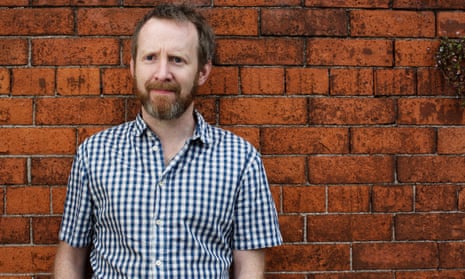
The Mark and the Void by Paul Murray review – a philosophical shaggy dog tale
The follow-up to Skippy Dies is a playful, sometimes chilling farce set in an Irish investment bank
Stephanie Cross
Sunday 12 February 2016
Amid the bounce and twinkle-eyed hilarity of Paul Murray’s third novel, set in the Irish investment banking industry, there are several moments that strike a chill – the scene, for example, in which one trader explains that his monstrous institution is still too small, because it isn’t yet “setting its own agenda, reality-wise”.
Reality and fiction are the themes at the heart of this philosophical shaggy dog farce, which proves to be a more than worthy successor to the much-loved Skippy Dies.
Our hero is Claude, a French-born former philosophy student, whose nickname, Crazy Frog, belies the fact that - with the exception of his former anthropologist colleague, Ish – he’s probably the most level-headed employee of the Dublin-based Bank of Torabundo. He’s also under no illusions as to the nature of his work and is thus somewhat nonplussed to learn that he is a contemporary everyman – or at least according to a writer by the name of “Paul” (wink wink), who intends to put Claude at the centre of his next novel. “The story of the 21st century so far is the story of the banks,” Paul says. “Look at the mess this country’s in because of them.” It’s not just the death of the Celtic tiger that Paul is interested in, though: he believes that the realist novel itself is bankrupt, no longer fit for purpose in a globalised, increasingly virtual world: “Being here means not being here. And that’s modern life.”
Over the course of the next 400-odd pages, The Mark and the Void spins out in numerous directions, but when it matters Murray hits home – sometimes in ways that catch the reader off guard, as when Claude reflects on the family photos that, after the death of his father, he spent evenings scanning. Was he digitising them for ease of future viewing, he wonders, or because he never wanted to have to see them again?
Murray’s are weighty concerns. But the impression throughout is of an author having a grand old time: witness a minor-circle-of-hell-league nightclub called Life (“After a few drinks Life won’t seem so bad”), a co-VP called Death, and an extremely dubious business venture called Myhotswaitress.com (well worth a visit). The good news is that it’s a ball for the reader too – something that will come as a relief to wearied veterans of so many supposedly “playful” metafictions.
The Mark and the Void is published by Hamish Hamilton (£8.99).
THE GUARDIAN

No comments:
Post a Comment